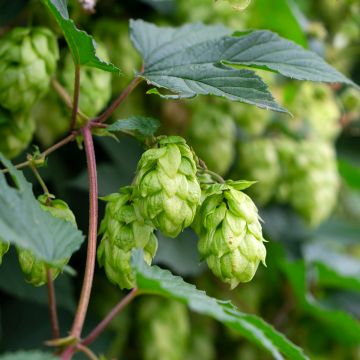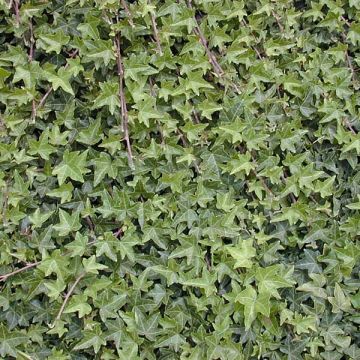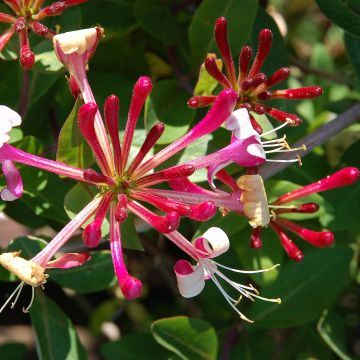

Humulus lupulus Magnum - Common Hop


Humulus lupulus Magnum - Common Hop
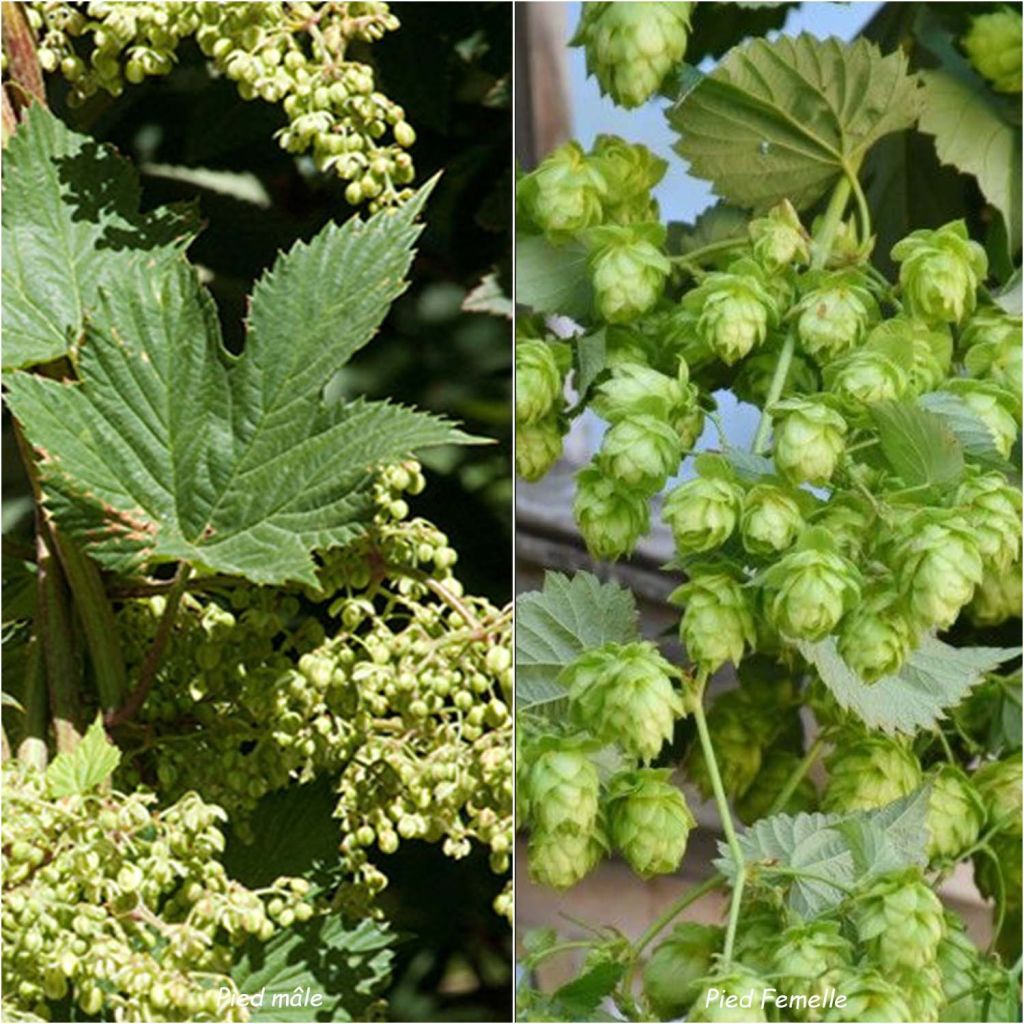

Humulus lupulus Magnum - Common Hop


Humulus lupulus Magnum - Common Hop
Humulus lupulus Magnum - Common Hop
Humulus lupulus Magnum
Hop, Common Hop
Fast delivery and very good packaging. The hop plants thrive and have already provided me with beautiful flowers. Absolutely top-notch.
Aurélien G., 07/12/2020
This item cannot be shipped to the selected country
Delivery charge from €5.90
Delivery to Corse prohibited
More information
Schedule delivery date,
and select date in basket
This plant carries a 12 months recovery warranty
More information
We guarantee the quality of our plants for a full growing cycle, and will replace at our expense any plant that fails to recover under normal climatic and planting conditions.
From €5.90 for pickup delivery and €6.90 for home delivery
Express home delivery from €8.90.
Delivery to Corse prohibited: UE law prohibits the import of this plant from mainland France to Corse as part of the fight against Xylella fastidiosa. Please accept our sincere apologies.
More information
Does this plant fit my garden?
Set up your Plantfit profile →
Description
Humulus lupulus Magnum, also known as hops, is a rhizomatous climbing plant that originates from Europe and Asia. These hops have rough stems that allow it to climb in a copse as well as trees. These rapidly growing stems can reach over 6m (20ft) in length in a single season. Humulus is a herbaceous plant. It mostly grows in sheltered areas from the wind and in rich and deep soils, in a temperate climate.
Its tender green leaves are round, lobed, and rough, consisting of 3 to 5 lobes. This perennial plant is dioecious (the flowers of opposite sexes are found on different plants). Hops have long been used by brewers for beer production, especially the female flowers that produce the cone shaped fruits. The Magnum variety is a selection with larger cones than the typical variety. In the past, these cones were used to ensure the preservation of beer, and this tradition has continued.
If you suffer from insomnia, you can also gather hop leaves, spread them in a dry place, and make sure to turn them every day. Once the leaf is completely dried, stuff your pillow with it, and thanks to the properties of the dried leaves, you will have peaceful nights.
Hops should be planted in fertile soil that is not waterlogged. Plant them in full sun or partial shade, during spring, in a warm and sheltered location. The stems can be guided using trellises. It mixes well with other climbing plants, especially roses. However, these robust plants, once established, can overwhelm more delicate neighbouring plants.
Hops should be pruned back to 25cm (10in) in height at the end of winter. The flowers appear from July to September. It is an easy plant to cultivate.
Note: The species is dioecious. The male flowers are in clusters, and the female flowers are pendant ovate cones with filiform stigmas.
The female flowers have long thread-like stigmas.
It is impossible for us to differentiate between male and female plants for your order.
Report an error about the product description
Humulus lupulus Magnum - Common Hop in pictures
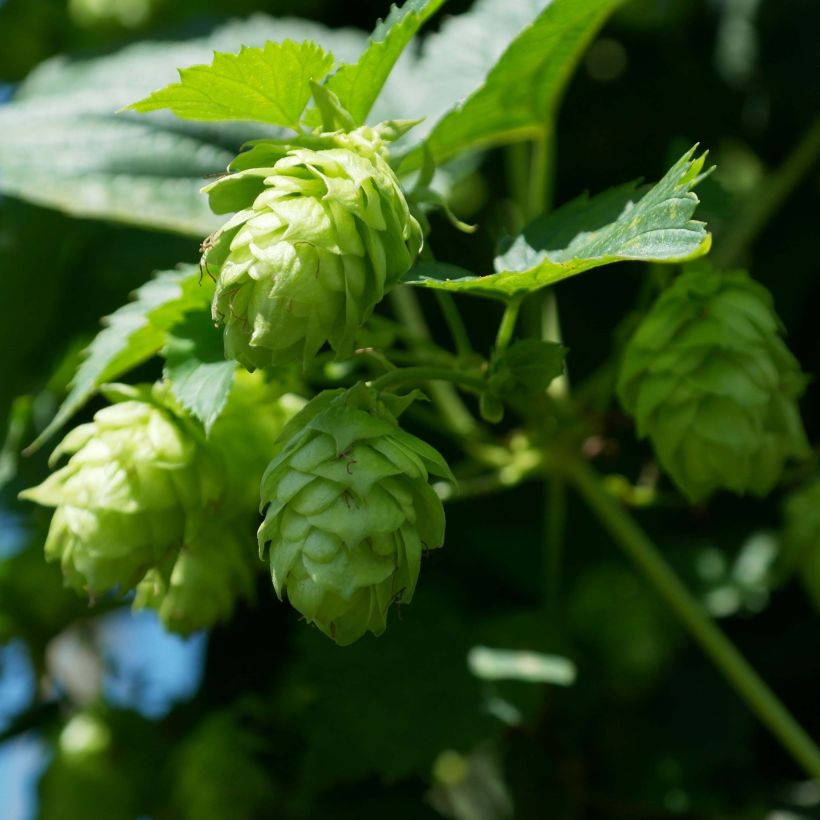



Flowering
Foliage
Plant habit
Botanical data
Humulus
lupulus
Magnum
Cannabinaceae
Hop, Common Hop
Eastern Europe
Other Humulus - Hop
Planting and care
Plant hops in spring, in fertile soil with good drainage in a position in full sun or partial shade, in a warm and sheltered location. The stems can be guided using trellises. However, these vigorous plants, once established, can smother smaller, more delicate, and slower-growing neighbouring plants. The hop should be pruned to 25 cm (10in) in height at the end of winter, and the old stems should be cut back to ground level at the end of autumn. The flowers appear from July to September. For propagation, cuttings can be made. It is an easy plant to cultivate. Avoid, among other things, sprinkler irrigation and add fertiliser to prevent hop plants from being affected by verticillium wilt (a vascular disease caused by a soil fungus). Water occasionally in summer and during winter, allow the plant to enter a vegetative rest period. Cultivation is possible in large pots.
Planting period
Intended location
Care
-
, onOrder confirmed
Reply from on Promesse de fleurs
Shade-loving climbers
Haven't found what you were looking for?
Hardiness is the lowest winter temperature a plant can endure without suffering serious damage or even dying. However, hardiness is affected by location (a sheltered area, such as a patio), protection (winter cover) and soil type (hardiness is improved by well-drained soil).

Photo Sharing Terms & Conditions
In order to encourage gardeners to interact and share their experiences, Promesse de fleurs offers various media enabling content to be uploaded onto its Site - in particular via the ‘Photo sharing’ module.
The User agrees to refrain from:
- Posting any content that is illegal, prejudicial, insulting, racist, inciteful to hatred, revisionist, contrary to public decency, that infringes on privacy or on the privacy rights of third parties, in particular the publicity rights of persons and goods, intellectual property rights, or the right to privacy.
- Submitting content on behalf of a third party;
- Impersonate the identity of a third party and/or publish any personal information about a third party;
In general, the User undertakes to refrain from any unethical behaviour.
All Content (in particular text, comments, files, images, photos, videos, creative works, etc.), which may be subject to property or intellectual property rights, image or other private rights, shall remain the property of the User, subject to the limited rights granted by the terms of the licence granted by Promesse de fleurs as stated below. Users are at liberty to publish or not to publish such Content on the Site, notably via the ‘Photo Sharing’ facility, and accept that this Content shall be made public and freely accessible, notably on the Internet.
Users further acknowledge, undertake to have ,and guarantee that they hold all necessary rights and permissions to publish such material on the Site, in particular with regard to the legislation in force pertaining to any privacy, property, intellectual property, image, or contractual rights, or rights of any other nature. By publishing such Content on the Site, Users acknowledge accepting full liability as publishers of the Content within the meaning of the law, and grant Promesse de fleurs, free of charge, an inclusive, worldwide licence for the said Content for the entire duration of its publication, including all reproduction, representation, up/downloading, displaying, performing, transmission, and storage rights.
Users also grant permission for their name to be linked to the Content and accept that this link may not always be made available.
By engaging in posting material, Users consent to their Content becoming automatically accessible on the Internet, in particular on other sites and/or blogs and/or web pages of the Promesse de fleurs site, including in particular social pages and the Promesse de fleurs catalogue.
Users may secure the removal of entrusted content free of charge by issuing a simple request via our contact form.
The flowering period indicated on our website applies to countries and regions located in USDA zone 8 (France, the United Kingdom, Ireland, the Netherlands, etc.)
It will vary according to where you live:
- In zones 9 to 10 (Italy, Spain, Greece, etc.), flowering will occur about 2 to 4 weeks earlier.
- In zones 6 to 7 (Germany, Poland, Slovenia, and lower mountainous regions), flowering will be delayed by 2 to 3 weeks.
- In zone 5 (Central Europe, Scandinavia), blooming will be delayed by 3 to 5 weeks.
In temperate climates, pruning of spring-flowering shrubs (forsythia, spireas, etc.) should be done just after flowering.
Pruning of summer-flowering shrubs (Indian Lilac, Perovskia, etc.) can be done in winter or spring.
In cold regions as well as with frost-sensitive plants, avoid pruning too early when severe frosts may still occur.
The planting period indicated on our website applies to countries and regions located in USDA zone 8 (France, United Kingdom, Ireland, Netherlands).
It will vary according to where you live:
- In Mediterranean zones (Marseille, Madrid, Milan, etc.), autumn and winter are the best planting periods.
- In continental zones (Strasbourg, Munich, Vienna, etc.), delay planting by 2 to 3 weeks in spring and bring it forward by 2 to 4 weeks in autumn.
- In mountainous regions (the Alps, Pyrenees, Carpathians, etc.), it is best to plant in late spring (May-June) or late summer (August-September).
The harvesting period indicated on our website applies to countries and regions in USDA zone 8 (France, England, Ireland, the Netherlands).
In colder areas (Scandinavia, Poland, Austria...) fruit and vegetable harvests are likely to be delayed by 3-4 weeks.
In warmer areas (Italy, Spain, Greece, etc.), harvesting will probably take place earlier, depending on weather conditions.
The sowing periods indicated on our website apply to countries and regions within USDA Zone 8 (France, UK, Ireland, Netherlands).
In colder areas (Scandinavia, Poland, Austria...), delay any outdoor sowing by 3-4 weeks, or sow under glass.
In warmer climes (Italy, Spain, Greece, etc.), bring outdoor sowing forward by a few weeks.


































